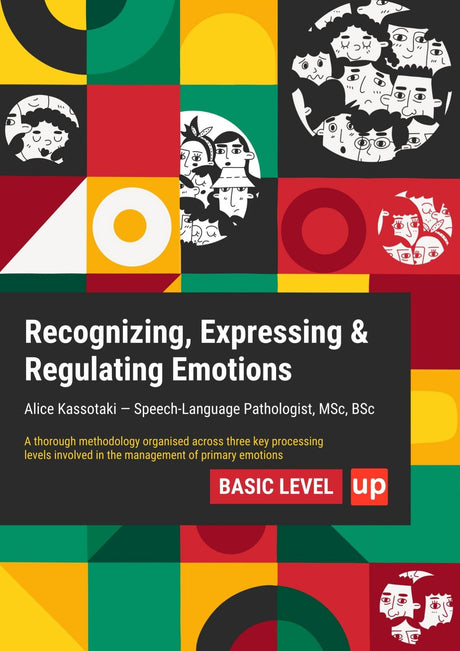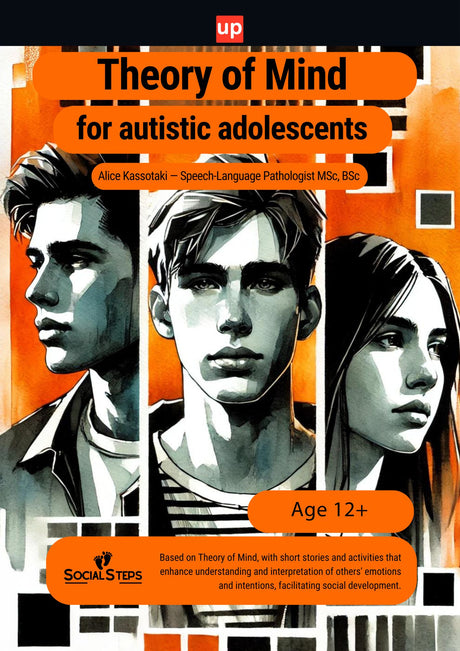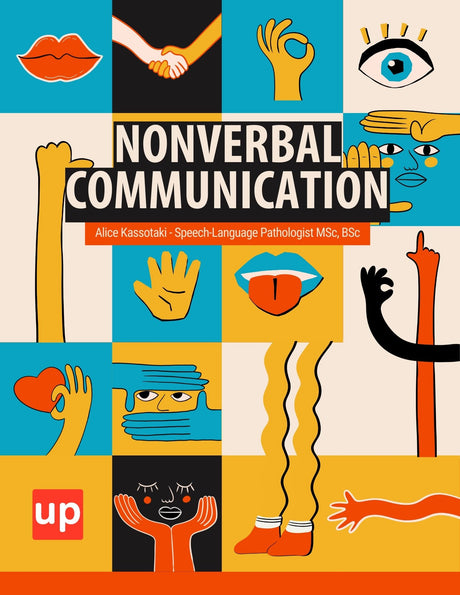In navigating the intricacies of mental health disorders, particularly distinguishing between bipolar disorder and autism spectrum disorder, the complexities are formidable. These two conditions, frequently misunderstood and occasionally conflated, possess distinct yet sometimes overlapping symptoms, which complicates accurate diagnosis and treatment. Such confusion often leads to misdiagnosis and improper management, underscoring the critical need for clear differentiation and comprehension.
Key Takeaways
- Bipolar disorder and autism spectrum disorder are distinct conditions with overlapping symptoms, making accurate diagnosis essential for effective treatment.
- There is a notable genetic link and higher co-occurrence rate between autism and bipolar disorder, requiring careful evaluation to distinguish symptoms and manage both conditions appropriately.
- Early diagnosis, tailored treatment plans including medication and behavioral therapies, and strong support networks are crucial to improving outcomes and quality of life for individuals with either or both disorders.
Understanding Bipolar Disorder

Bipolar disorder is a mood disorder characterized by dramatic mood swings, including manic and depressive episodes. During manic episodes, individuals experience elevated mood and energy, often leading to impulsive behaviors. Conversely, depressive episodes are marked by low mood and fatigue, resulting in decreased motivation and feelings of hopelessness. Some individuals experience severe depression during these episodes, which can be particularly intense and impactful.
These mood shifts can occur rapidly over days, weeks, or even months, leading to significant mood instability. Typically diagnosed in late adolescence or adulthood, bipolar disorder—also known as bipolar affective disorder—can also be present in children, though it is less commonly recognized in the younger population. Bipolar affective disorder often emerges in young adults, with onset frequently occurring before age 20.
The prevalence among youth is around 1 to 2 percent. A particularly concerning aspect of bipolar disorder is the increased risk of suicide, with affected individuals—especially young adults—being 15 times more likely to attempt or complete suicide than the general population.
|
Key Characteristics of Bipolar Disorder |
|---|
|
Manic Episodes |
|
Depressive Episodes |
|
Mood Instability |
|
High Suicide Risk |
Timely diagnosis and intervention are crucial, with treatments often involving mood stabilizers and psychiatric therapies to manage symptoms effectively.
Overlapping Characteristics between Bipolar and Autism
Bipolar disorder and autism spectrum disorder (ASD), a developmental disorder, often share overlapping characteristics that can complicate diagnosis and treatment. Approximately 7% of individuals with autism are also diagnosed with bipolar disorder, significantly higher than the general population. This co-occurrence suggests a genetic linkage, as both conditions have shown specific activation of star shaped brain cells (astrocytes), which play a role in gene expression related to neuropsychiatric conditions, and similar impacts on synapses in the brain. Furthermore, it’s estimated that about 30% of youths with bipolar disorder meet the criteria for autism. Overlapping symptoms such as irritability, sleep disturbances, hyperactivity, impulsivity, and mood swings may lead to complexities in distinguishing between the two developmental disorders. The relationship and comorbidity between autism spectrum disorder, bipolar disorder, and i disorder highlight the genetic links and overlapping features, making diagnosis and understanding their connection challenging. This overlap requires careful diagnostic evaluation and tailored treatment approaches based on each individual’s needs.
Common Symptoms
In individuals who have both autism and bipolar disorder, overlapping symptoms can include disturbed sleep, hyperactivity, irritability, and impulsivity. Comorbid ADHD is also common in individuals with both autism and bipolar disorder, further complicating diagnosis. Depressed mood is a key symptom that may be present in both conditions, especially in youth, and should be carefully assessed during evaluation.
However, the symptoms of bipolar disorder in someone with autism may manifest uniquely, presenting behaviors like pressured speech, constant pacing, and decreased need for sleep. Despite experiencing similar symptoms to bipolar disorder, autistic individuals typically do not undergo the distinct manic and depressive episodes. Sensory sensitivities often seen in both conditions might intensify during bipolar mood episodes. Understanding these nuanced presentations is vital, as distinguishing between autism-related meltdowns and bipolar manic episodes involves recognizing specific triggers and durations, such as sensory overload or frustration in autism.
Psycho-social Risks
The interplay of bipolar disorder and autism spectrum disorder can lead to significant psycho-social challenges for affected individuals. Bipolar disorder often amplifies mood swings, emotional dysregulation, and impulsivity in autistic individuals, potentially resulting in damaged relationships and poor performance in work or school environments. Research shows that adults with autism have a higher prevalence of bipolar disorder compared to the general population, exacerbating existing socialization and communication difficulties. Autistic adults also face increased risks of victimization and violence, with studies indicating higher rates of sexual assault and violent victimization in this population due to social reasoning challenges and literal interpretations. These overlapping symptoms can interfere with daily functioning and create additional obstacles in an individual’s social life. Both disorders can disrupt normal activities, and suicidal ideation is more prevalent among individuals with co-occurring autism and mood disorders, underscoring the importance of comprehensive understanding and addressing of their psycho-social impacts to minimize risks and improve quality of life.
Misdiagnosis and Co-occurrence

The interrelation between autism spectrum disorders (ASD) and bipolar disorder presents significant diagnostic challenges. Differentiating between autism, bipolar disorder, and other mental disorders is complex due to overlapping symptoms. The overlapping symptoms, such as impulsivity, social challenges, and emotional dysregulation, can often result in misdiagnosis. This issue is particularly pronounced among individuals with autism who have language impairments or intellectual disabilities, making the nuanced assessment of psychiatric disorders and the need to distinguish autism from other psychiatric disorders during clinical evaluation even more complex. Among the subtypes within the autism spectrum, pervasive developmental disorder is recognized as a subgroup that can further complicate diagnosis, especially when considering co-occurrence with bipolar disorder. Research indicates a potential genetic link between autism and bipolar disorder, suggesting shared genetic expressions in the brain. This possible genetic link may explain why individuals with autism frequently manifest bipolar symptoms earlier than in the general population. Understanding these overlaps and potential genetic ties is crucial for clinicians to make accurate diagnoses and to distinguish between these complex psychiatric conditions.
Challenges in Accurate Diagnosis
Diagnosing psychiatric conditions like bipolar disorder in individuals with autism requires a specialized and careful approach. Emotional dysregulation is common in both conditions, but differentiating them involves evaluating patterns, triggers, and the duration of symptoms. Due to the symptom overlap, autistic individuals are at a higher risk of being misdiagnosed with bipolar disorder. The presence of both conditions can compound the difficulties in identifying distinct symptoms. Clinicians often differentiate bipolar symptoms from autistic traits by examining the onset and consistency over time. To aid in distinguishing mood symptoms in autism and bipolar disorder, clinicians may use standardized rating scales for affective disorders, such as the K-SADS-PL, MRS, and DRS. Additionally, communication difficulties inherent in autism can further complicate the diagnostic process for co-occurring bipolar disorder, underscoring the necessity for a nuanced assessment approach.
Prevalence of Co-occurrence
Studies have demonstrated a notable prevalence of co-occurrence between autism and bipolar disorder, far exceeding that in the general population. Approximately 27% of individuals with autism exhibit symptoms of bipolar disorder, compared to about 4% in the broader population. In certain study samples, up to 30% of youth diagnosed with bipolar disorder type I also have an autism diagnosis. Longitudinal studies indicate that individuals with autism may be at increased risk of developing bipolar disorder over time, highlighting the importance of early detection and intervention. This increased prevalence is thought to stem from overlapping symptoms and a potential shared genetic basis. Understanding these statistics helps guide clinical evaluative practices and emphasizes the importance of recognizing the shared, though distinct, presentations of each condition. The increased incidence underlines the critical need for awareness and tailored approaches in managing these intersecting psychiatric disorders.
Differentiating Traits
Understanding the differences between bipolar disorder and autism spectrum disorder (ASD) is crucial, given both are distinct mental health conditions with varying onset and expression. Autism presents as a neurodevelopmental disorder with early childhood onset, characterized by persistent challenges in communication and social interaction. In contrast, bipolar disorder, a mental health condition, is defined by mood swings that can surface later in life, often as a response to life stressors or trauma. The causes and onset of these conditions are influenced by various risk factors, including genetic and environmental influences, which contribute to their development and expression. While the symptoms of autism are unrelated to mood fluctuations and remain consistent from early stages, bipolar disorder is marked by episodes that are mood-related, including manic and depressive episodes, with variable durations and onset times. These mood episodes are absent in autism, which instead may involve traits like stimming and repetitive behaviors for self-soothing. Despite overlapping symptoms such as irritability, the distinction between these disorders often relies on examining the persistence and timing of behaviors.
Unique Characteristics of Bipolar
Bipolar disorder is marked by significant mood changes, oscillating between episodes of mania and depression. These manic episodes are characterized by elevated energy levels, rapid thoughts, decreased sleep requirements, and sometimes reckless behavior. Conversely, depressive episodes involve pervasive sadness, fatigue, persistent emptiness, and thoughts of self-harm. Such mood fluctuations form the diagnostic core of bipolar disorder, with the DSM-5 providing criteria that include the duration and impact of these episodes. Typically, a diagnosis requires at least one manic or hypomanic episode, demonstrating the extremities of mood experienced by individuals with this disorder. Although bipolar disorder is primarily diagnosed in late adolescence or adulthood, instances in younger populations do occur, though much less frequently. This variability in onset underscores the importance of recognizing bipolar disorder's unique feature of significant mood swings, distinct from the consistent traits observed in autism.
Distinct Features of Autism
Autism Spectrum Disorder (ASD) is a neurodevelopmental condition that appears early in life, prominently impacting communication and social skills. Individuals with ASD often show restrictive interests and repetitive behaviors, which are core characteristics of the disorder. Sensory sensitivities also play a significant role in autism, with individuals experiencing discomfort or anxiety in response to stimuli like loud noises or bright lights. These sensory issues can lead to meltdowns or heightened stress, complicating social interactions. Diagnosis can be challenging because some behaviors, such as rapid speech or mood changes due to disruptions in routine, might resemble symptoms of other conditions, complicating accurate assessment. ASD is also defined by repetitive behaviors that significantly affect daily living according to DSM-5 criteria, and incorrect or incomplete assessments can occur due to diagnostic overshadowing. Overcoming these challenges requires careful consideration of the distinct developmental and behavioral traits associated with autism, ensuring accurate and informed diagnoses.
Diagnostic Challenges

Diagnosing either bipolar disorder or autism spectrum disorder presents unique challenges due to their overlapping symptoms and behaviors. Both conditions can manifest as emotional dysregulation, making it difficult to differentiate between the two without careful evaluation. For example, autistic traits such as social withdrawal, repetitive behaviors, and sensory sensitivities can sometimes be mistaken for the mood-related symptoms associated with bipolar disorder, such as mood episodes, manic episodes, and depressive episodes. Research indicates that autistic individuals are more frequently diagnosed with bipolar disorder compared to the general population, although the true prevalence of their co-occurrence remains uncertain. These diagnostic complexities are compounded by the communication difficulties often experienced by autistic people, which can obscure the identification of distinct mood patterns and triggers necessary for an accurate diagnosis.
Special Considerations in Youths
In children and adolescents, distinguishing between autism spectrum disorder and bipolar disorder is particularly challenging due to the early onset and potential overlap of symptoms. Youth with a comorbid diagnosis of autism and bipolar disorder may exhibit mood characteristics typical of bipolar disorder, such as heightened irritability and aggression, but often experience these symptoms earlier than those without autism. Misdiagnosis in younger populations frequently occurs as overlapping symptoms can skew statistics and complicate efforts to discern accurate prevalence rates. It's crucial to differentiate behaviors typical of autism, like stimming, from new manic symptoms indicative of bipolar episodes. Additionally, youths with both diagnoses may face significant challenges in forming and maintaining friendships, which can further contribute to their functional impairments.
Impact on Treatment and Management
The treatment approaches for bipolar disorder and autism spectrum disorders differ significantly, necessitating a combined strategy when both conditions coexist. Bipolar disorder treatment typically involves medications such as mood stabilizers and antipsychotic drugs to manage mood swings and emotional dysregulation. In contrast, autism support services focus on helping individuals adapt to environments not naturally suited to their needs through interventions like Applied Behavior Analysis and Cognitive Behavioral Therapy. When bipolar disorder co-occurs with autism, mood swings can further complicate social relationships and affect performance at work or school. Thus, early identification and intervention are crucial for improving long-term outcomes, highlighting the need for accurate diagnosis. Support networks play a significant role here, helping manage psychiatric conditions for those affected by both autism and bipolar disorder.
Special Considerations in Youths
When dealing with youths who have both autism and bipolar disorder, certain considerations are essential for accurate diagnosis and treatment. These individuals often display mood characteristics associated with Bipolar Disorder at a younger age compared to their peers without autism. Key symptoms like irritability and aggression can overlap between Autism Spectrum Disorders and Bipolar Disorder, partly due to shared genetic expressions, which complicates diagnosis.
A critical challenge is distinguishing between typical autistic behaviors such as stimming and new manic symptoms during manic episodes. Misdiagnosis is common, as overlapping symptoms skew statistics and complicate efforts to determine accurate prevalence rates for both psychiatric conditions.
Additionally, youths with these comorbid diagnoses often face significant functional impairments. Forming and maintaining friendships can be particularly challenging, impacting their social skills and interactions. To address these complexities, a multi-disciplinary approach that may include mood stabilizers, Cognitive Behavioral Therapy, or support networks is often needed.
Below is a summary table:
|
Consideration |
Implication |
|---|---|
|
Early bipolar symptoms |
Occur at a younger age in autistic youths |
|
Overlapping symptoms |
Complicates accurate diagnosis |
|
Distinguishing behaviors |
Vital for identifying new manic symptoms |
|
Additional functional impairments |
Challenges in social interactions and friendship formation |
Understanding these factors is critical for effective intervention and support.
The Experience of an Autistic Person

The daily life of an autistic person is shaped by unique strengths and challenges. Many autistic individuals find social situations and communication to be difficult, often feeling misunderstood or overwhelmed in group settings. Sensory processing differences are also common, with some autistic people experiencing sensory overload from lights, sounds, or textures that others might not notice. Despite these challenges, autistic individuals often have special interests or talents that can be a source of joy and accomplishment. Embracing these interests and providing the right accommodations can help autistic people thrive. It is important to listen to and respect the perspectives of autistic individuals, ensuring they have the support and understanding needed to navigate social situations, express themselves, and manage sensory experiences in a way that works best for them.
Impact on Treatment and Management
The treatment and management of bipolar disorder and autism spectrum disorders require distinct approaches due to their unique characteristics. Bipolar disorder treatment focuses on managing symptoms such as mood swings and psychotic symptoms to improve daily functioning. Common treatments include mood stabilizers like valproic acid and antipsychotic drugs.
In contrast, autism support services aim to help individuals adapt to environments through strategies such as Applied Behavior Analysis and Cognitive Behavioral Therapy. These interventions focus on improving social skills and navigating sensory sensitivities.
When both conditions co-occur, early identification and intervention are crucial for enhancing long-term outcomes. A comprehensive approach may involve a combination of psychiatric conditions treatments and supportive interventions, ensuring accurate diagnosis for effective management. Here's a quick comparison:
|
Bipolar Disorder |
Autism Spectrum Disorders |
|---|---|
|
Focuses on mood stabilization |
Emphasizes adapting to environments |
|
Commonly treated with medication |
Managed with structured interventions |
|
Affects emotional regulation |
Involves improving social interactions |
This dual diagnosis approach can prevent exacerbated mood swings and social withdrawal, facilitating better performance at work or school. A strong support network is essential in managing these complex conditions effectively.
Implications for Treatment and Management
Bipolar disorder and autism spectrum disorders are lifelong conditions that necessitate personalized treatment and support strategies. Successfully managing both conditions involves intricate planning and often demands collaboration among individuals, families, and mental health professionals. Accurate diagnosis is critical as overlapping symptoms can complicate the identification process. Early intervention is particularly crucial, as it significantly impacts long-term outcomes by enabling more effective management of symptoms. When autism and bipolar disorder co-occur, there's potential for heightened mood swings and emotional regulation issues, placing greater importance on tailored interventions. Implementing a comprehensive treatment plan that combines behavioral and medicinal strategies is essential for optimizing daily functioning and enhancing quality of life.
Behavioral Therapy Strategies
Behavioral therapy plays a pivotal role in managing the complexities of both autism and bipolar disorder. For autism, therapies like Applied Behavior Analysis (ABA) are highly effective, emphasizing the development of communication and social skills, which are often areas of challenge for individuals on the spectrum. On the other hand, cognitive-behavioral therapy (CBT) is an established method for managing mood disorders, helping to alleviate mood swings and emotional issues associated with bipolar disorder. When these therapies are combined, they provide a holistic treatment approach, promoting better overall well-being. However, it is crucial to start with an accurate diagnosis, as overlapping symptoms can arrest progress if not correctly identified. Customizing these therapy strategies according to an individual's specific needs is important due to the lifelong nature of both conditions and the necessity for tailored management approaches.
Medication Management Approaches
Medication management is a cornerstone of treating bipolar disorder, which may become more complex when combined with autism. Mood stabilizers like lithium, Depakote, and valproic acid are frequently used to stabilize mood in bipolar disorder and are generally preferred for individuals on the autism spectrum experiencing mood instability. However, lithium is often approached with caution due to its potential for toxicity. Alternatively, antipsychotics such as Risperidal, Seroquel, and Abilify are used to manage symptoms of bipolar disorder, with atypical antipsychotics like aripiprazole and risperidone effective in controlling irritability in autistic children. It's important to note that antidepressants should not be used on their own for bipolar disorder as they risk triggering manic episodes. In practice, mood stabilizers might be paired with low-dose antipsychotics to help autistic individuals manage bipolar disorder, especially in reducing emotional dysregulation and impulsivity issues, aligning with the need for a nuanced and comprehensive treatment plan.
Lifestyle Changes and Self-Care

For individuals living with bipolar disorder, autism and bipolar disorder, or both, making positive lifestyle changes and prioritizing self-care can play a vital role in managing symptoms and improving overall well-being. Maintaining a healthy diet, engaging in regular exercise, and ensuring adequate sleep are foundational steps that support both physical and mental health. Stress management techniques such as meditation, yoga, or mindfulness practices can help reduce anxiety and stabilize mood. It’s important to remember that self-care is not one-size-fits-all; what works for one person may not work for another. Collaborating with a healthcare professional can help tailor a self-care plan that addresses individual needs, taking into account the unique challenges of bipolar disorder and autism and bipolar disorder. By making intentional lifestyle choices, individuals can better manage mood swings, sensory sensitivities, and daily stressors.
Long-Term Management and Support
Long-term management and support are essential for individuals navigating the complexities of bipolar disorder and autism and bipolar disorder. Effective care often involves a combination of ongoing therapy, medication management, and strong support from family members and friends. Developing a comprehensive treatment plan with the guidance of a medical professional ensures that interventions are tailored to the individual’s unique needs and goals. Regular therapy sessions can help address emotional regulation, social skills, and coping strategies, while medication management may be necessary to stabilize mood and manage symptoms. Family involvement and a supportive environment play a crucial role in promoting long-term stability and well-being. By focusing on consistent, individualized care, those with bipolar disorder and autism and bipolar disorder can achieve better outcomes and maintain a higher quality of life.
Additional Resources
Accessing additional resources can make a significant difference for individuals and families affected by bipolar disorder and autism and bipolar disorder. Support groups offer a sense of community and understanding, allowing people to share experiences and coping strategies. Online forums provide a platform for connecting with others facing similar challenges, while educational materials can help deepen understanding of these mental health conditions and inform treatment decisions. Working closely with a healthcare professional ensures access to specialized treatment and up-to-date information. Whether seeking advice, emotional support, or practical guidance, utilizing available resources empowers individuals to take an active role in their mental health journey and fosters a network of support for both autistic people and those living with bipolar disorder.
Conclusion
Distinguishing between bipolar disorder and autism spectrum disorder is essential due to their overlapping symptoms and distinct treatment needs. Accurate diagnosis, early intervention, and tailored management strategies can significantly improve outcomes for individuals affected by one or both conditions. Collaboration among healthcare professionals, families, and support networks plays a vital role in providing comprehensive care and enhancing quality of life for those navigating these complex mental health challenges.
Upbility offers valuable resources and educational materials designed to support individuals and families navigating the complexities of bipolar disorder and autism spectrum disorder. Their content provides clear guidance on recognizing symptoms, understanding diagnostic criteria, and exploring treatment options.
Frequently Asked Questions (FAQ)
Can a person have both bipolar disorder and autism spectrum disorder?
Yes, it is possible to have both conditions simultaneously. Research indicates that individuals with autism have a higher prevalence of mood disorders, including bipolar disorder, compared to the general population. Accurate diagnosis is essential for effective treatment.
How can clinicians differentiate between bipolar disorder and autism?
Clinicians differentiate the two by examining the onset, duration, and nature of symptoms. Bipolar disorder is characterized by distinct mood episodes of mania and depression, while autism involves persistent challenges in social communication and repetitive behaviors from early childhood. A thorough clinical evaluation, often including family history and symptom tracking, aids in accurate diagnosis.
What are the common overlapping symptoms between bipolar disorder and autism?
Common overlapping symptoms include irritability, sleep disturbances, hyperactivity, impulsivity, and emotional dysregulation. However, the context and triggers of these symptoms differ between the two conditions.
Is there a genetic link between bipolar disorder and autism?
Studies suggest a genetic connection, with both conditions showing similar patterns of gene expression in certain brain cells called astrocytes. This genetic overlap may contribute to the higher rates of co-occurrence.
How is bipolar disorder treated in individuals with autism?
Treatment typically involves mood stabilizing medications and psychiatric therapies tailored to the individual's needs. Careful monitoring is important since some medications can have different effects in autistic individuals.
Are there special considerations for diagnosing bipolar disorder in young autistic individuals?
Yes, diagnosing bipolar disorder in autistic youth can be challenging due to overlapping symptoms and communication difficulties. Early onset of mood symptoms and functional impairments in social settings are key factors to consider.
What role do support groups play in managing bipolar disorder and autism?
Support groups provide valuable resources, emotional support, and community connection for individuals and families affected by these conditions. They can help in sharing experiences, coping strategies, and accessing appropriate treatment.
When should I seek help from a medical professional?
If you or a loved one experience mood swings, social communication difficulties, or behaviors that interfere with daily life, it is important to consult a medical professional for a proper diagnosis and appropriate treatment plan.
Original content from the Upbility writing team. Reproducing this article, in whole or in part, without credit to the publisher is prohibited.
References
-
Joshi G, Wozniak J, Petty C, et al. The prevalence and clinical correlates of bipolar spectrum disorder in children with autism spectrum disorder. J Affect Disord. 2013;151(1):135-142. doi:10.1016/j.jad.2013.06.022
-
Abu-Akel A, Shamay-Tsoory SG, Shalev L, et al. Autism spectrum traits in bipolar disorder. J Affect Disord. 2017;213:1-7. doi:10.1016/j.jad.2017.02.019
-
Zeliadt N. Genetic links between schizophrenia, bipolar disorder, and autism spectrum disorders. Neuropsychiatr Dis Treat. 2018;14:2023-2033. doi:10.2147/NDT.S158215
-
Gandal MJ, Haney JR, Parikshak NN, et al. Shared molecular neuropathology across major psychiatric disorders parallels polygenic overlap. Science. 2018;359(6376):693-697. doi:10.1126/science.aad6469
-
Raja M, Azzoni A. Bipolar disorder and pervasive developmental disorders: comorbidity or misdiagnosis? J Affect Disord. 2008;108(3):271-275. doi:10.1016/j.jad.2007.10.009
-
Fries GR, Bauer IE, Scaini G, et al. Suicide risk in bipolar disorder: a systematic review and meta-analysis of longitudinal studies. Acta Psychiatr Scand. 2020;141(6):497-508. doi:10.1111/acps.13163
-
South M, Ozonoff S, McMahon WM, et al. Suicide risk among individuals with autism spectrum disorder. Autism Res. 2020;13(6):1013-1024. doi:10.1002/aur.2298









